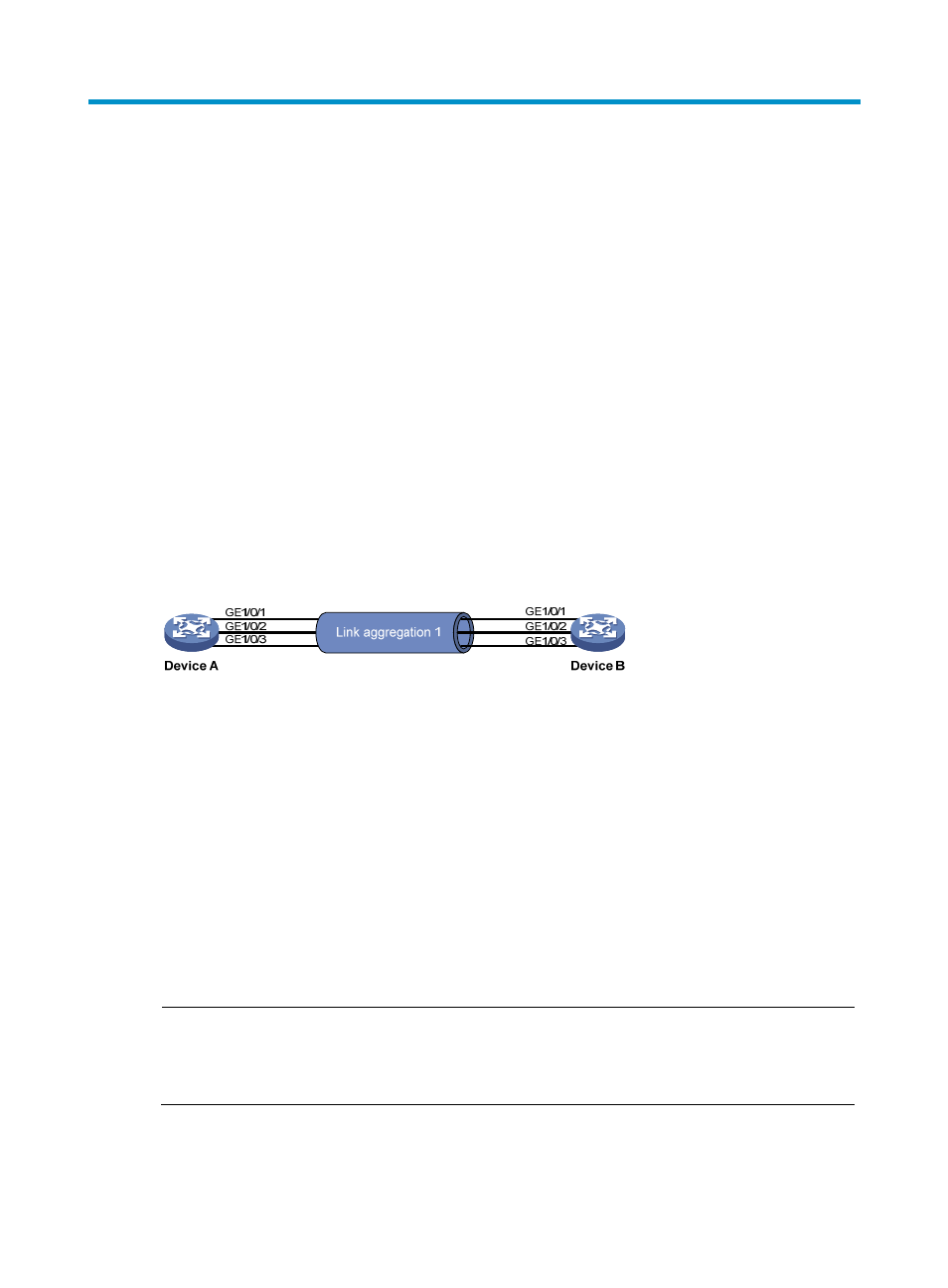Configuring ethernet link aggregation, Overview, Basic concepts – H3C Technologies H3C WX3000E Series Wireless Switches User Manual
Page 49

39
Configuring Ethernet link aggregation
Support of the H3C WX series access controllers for the Ethernet link aggregation feature may vary by
device model. For more information, see About the WX Series Access Controllers Configuration Guides.
Overview
Ethernet link aggregation, or simply link aggregation, combines multiple physical Ethernet ports into one
logical link, called an aggregate link. Link aggregation delivers the following benefits:
•
Increases bandwidth beyond the limits of any single link. In an aggregate link, traffic is distributed
across the member ports.
•
Improves link reliability. The member ports dynamically back up one another. When a member port
fails, its traffic is automatically switched to other member ports.
As shown in
, Device A and Device B are connected by three physical Ethernet links. These
physical Ethernet links are combined into an aggregate link, Link Aggregation 1. The bandwidth of this
aggregate link is as high as the total bandwidth of these three physical Ethernet links. At the same time,
the three Ethernet links back up one another.
Figure 10 Diagram for Ethernet link aggregation
Basic concepts
Aggregation group, member port, and aggregate interface
Link aggregation is implemented through link aggregation groups. An aggregation group is a group of
Ethernet interfaces combined together, which are called member ports of the aggregation group. For
each aggregation group, a logical interface, called an aggregate interface, is created. To an upper
layer entity that uses the link aggregation service, a link aggregation group looks like a single logical link
and data traffic is transmitted through the aggregate interface.
Aggregate interfaces are bridge-aggregation (BAGG) interfaces, also called Layer 2 aggregate
interfaces. When you create an aggregate interface, the device automatically creates an aggregation
group of the same type and number as the aggregate interface. For example, when you create interface
Bridge-Aggregation 1, Layer 2 aggregation group 1 is created.
NOTE:
The rate of an aggregate interface equals the total rate of its member ports in Selected state, and its duplex
mode is the same as the selected member ports. For more information about the states of member ports in
an aggregation group, see "
Aggregation states of member ports in an aggregation group
."
Aggregation states of member ports in an aggregation group
A member port in an aggregation group can be in either of the following aggregation states:
- H3C WX5500E Series Access Controllers H3C WX3500E Series Access Controllers H3C WX2500E Series Access Controllers H3C WX6000 Series Access Controllers H3C WX5000 Series Access Controllers H3C LSWM1WCM10 Access Controller Module H3C LSUM3WCMD0 Access Controller Module H3C LSUM1WCME0 Access Controller Module H3C LSWM1WCM20 Access Controller Module H3C LSQM1WCMB0 Access Controller Module H3C LSRM1WCM2A1 Access Controller Module H3C LSBM1WCM2A0 Access Controller Module H3C WA3600 Series Access Points H3C WA2600 Series WLAN Access Points
